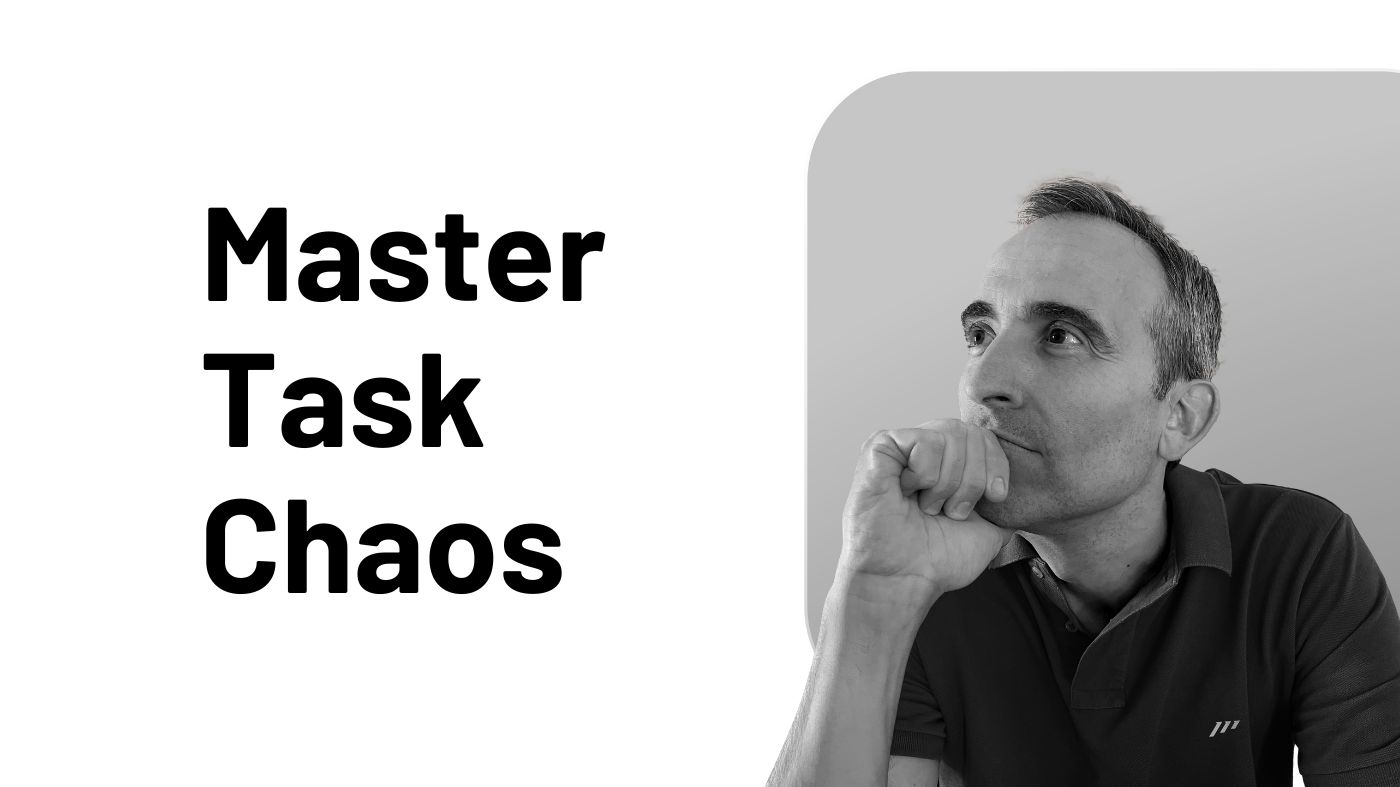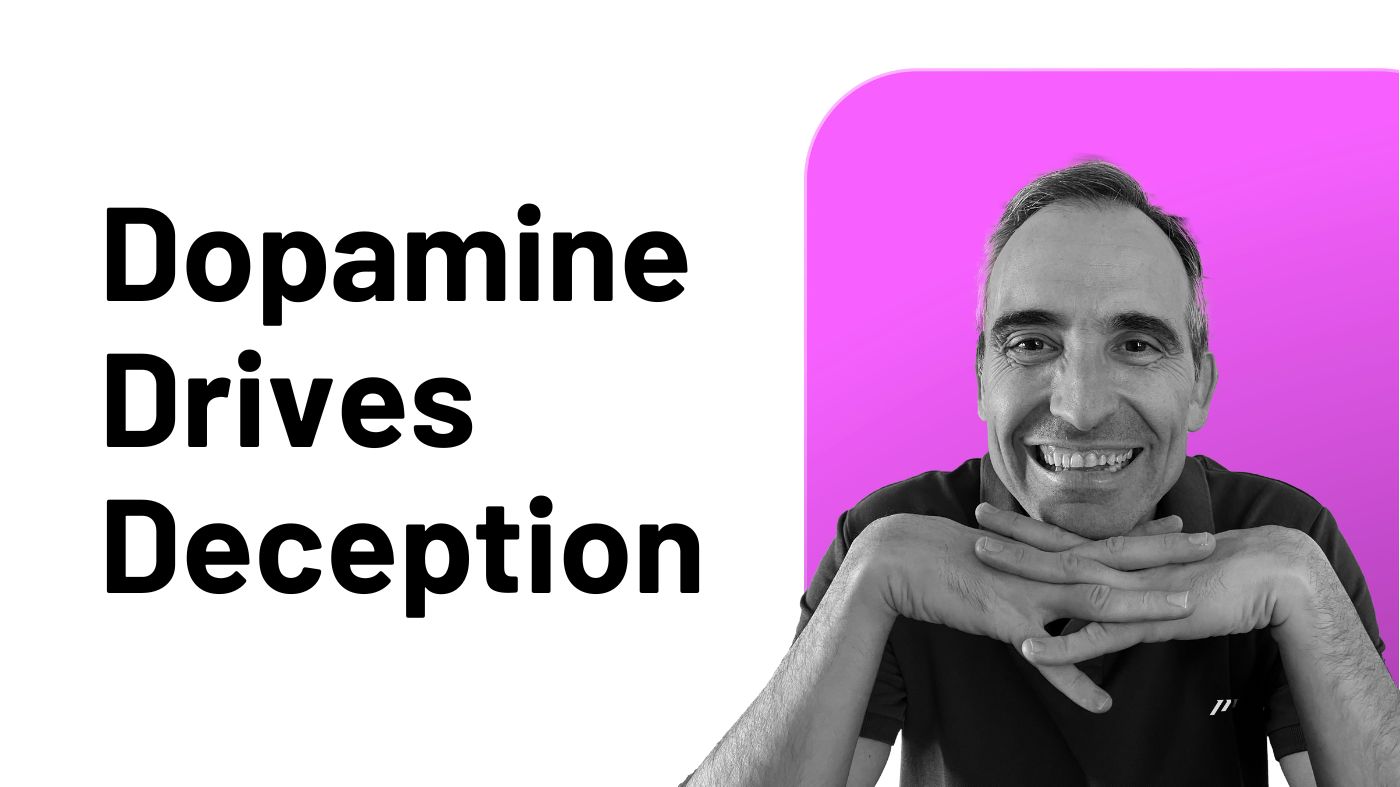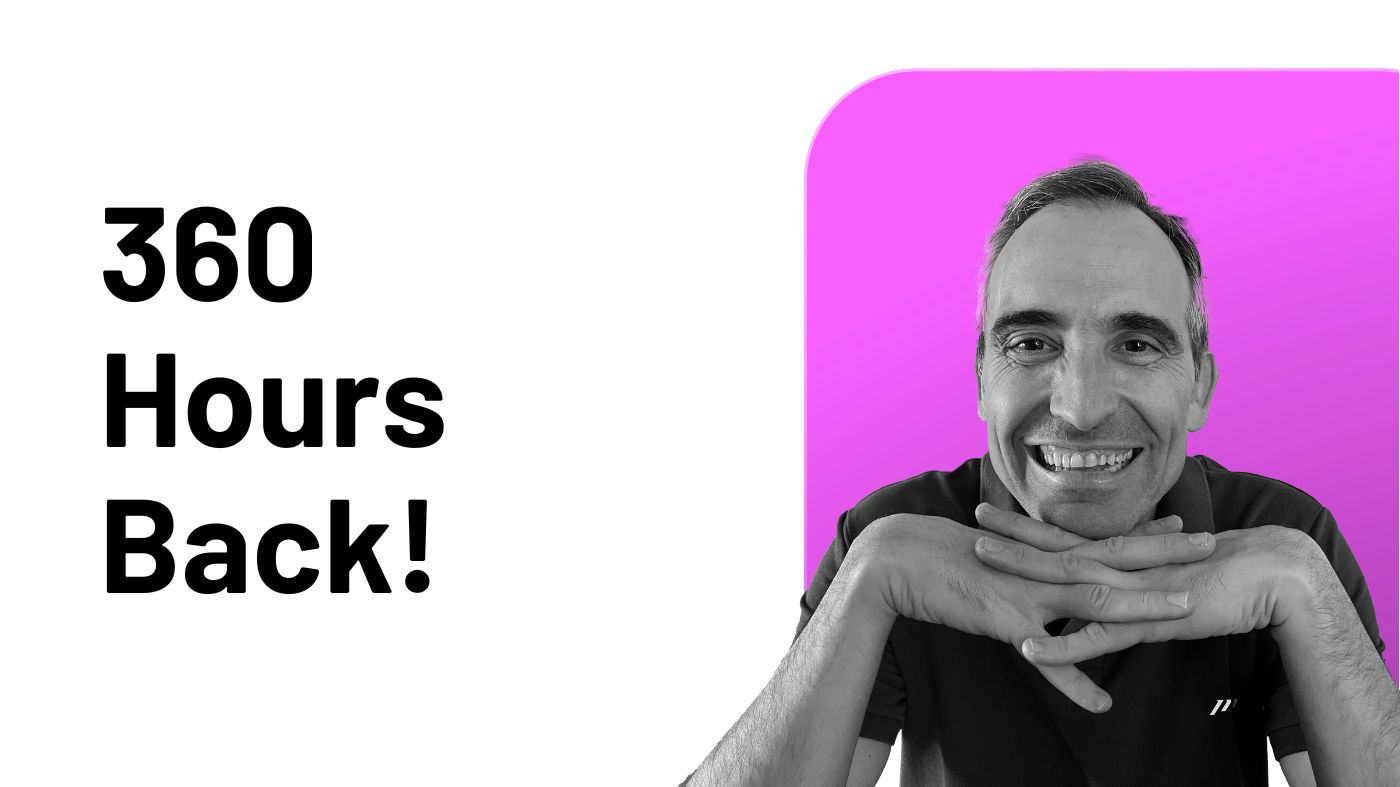“Should I put this task in our team’s project management tool or keep it in my personal task list?”missed deadlines and scattered attention.
The conventional wisdom of “just keep everything in one place” might not actually work for many of us.
As our work lives become increasingly collaborative, the line between team projects and personal work tasks has become frustratingly blurry.
This creates real problems:
-
Important tasks slip through the cracks.
-
Private ones accidentally get shared with the team.
-
Or, we waste time maintaining multiple complex systems.
But, before we dive into solutions, let’s clear up a common misconception.
When I talk about “personal tasks”, I’m not referring to your grocery list or hobby projects. In the ICOR® methodology, we make a crucial distinction:
-
Business refers to the part of your productivity system that affects both: you and your team.
-
Personal, on the other hand, refers to the part of your productivity system that only affects you. These are work-related tasks that only you need to know about or manage—things like preparing for a performance review, organizing your work files, or planning your professional development.
This distinction raises two key questions that coaching clients or members of the Paperless Movement®’s Membership often grapple with:
-
How do you manage tasks that belong to the business area but only affect to you?
-
How do you manage tasks that are personal to you and don’t affect the rest of the team?
In this article, I’ll share the exact system we’ve developed in the Paperless Movement® to handle both scenarios effectively.
You’ll learn how to maintain the perfect balance between team collaboration and personal work management, without creating unnecessary complexity or risking private information.
How Top Performers Can Approach Team Tasks on Their Own Terms
Imagine this: Your team’s project management tool shows you have five tasks due this week. They’re part of larger team projects, but you’re the only one who needs to complete them.
Should you keep checking them off in the team space, or create duplicates in your personal system?
There’s a better way.
Let’s tackle those team-connected tasks first.
You know the type—they live in your team’s Project Management system, but you’re the one responsible for planning and completing them.
In the ICOR® methodology, we’ve developed a clear principle: never manage these tasks entirely in your team space. Instead, we teach our clients to create what we call a “personal execution layer.”
This is fundamental to ICOR®: Your team’s Project Management system must serve as the Single Source of Truth, showing what needs to be done. However, the actual planning and execution requires a separate, private space.
You should start your week with a team planning session, what we call in ICOR® the weekly Agenda Meeting. It’s a meeting where everyone aligns on priorities and deadlines defining the main tasks that should be completed that week.
In the ICOR® methodology, we call these your Weekly Goals—the tasks that truly move the needle for your team. But here’s where most people go wrong: they try to manage every aspect of these tasks in the team space, creating unnecessary noise and complexity, instead of taking those tasks and mapping them into your personal system.
How do you do that?
“The essence of self-management is to organize the things that capture your attention in a systematic way. When you do, your mind will be clear and your decisions will be better.” — Ryder Carroll
The secret is using what we call a planner; a personal command center for your time and energy.
Think of it as your private workspace where you can break down tasks, schedule focused work blocks, and adjust your plan as needed without cluttering the team’s view.
Modern tools, such as Sunsama or Akilfow, make this seamless. Your planner (I personally love and use Sunsama) can pull tasks directly from your team’s system. This means you maintain that crucial connection to team priorities while gaining the freedom to plan your execution privately.
This approach gives you something invaluable: the ability to adapt your daily schedule without creating noise for your team.
-
Need to shift a task from morning to afternoon?
-
Want to break a specific task into smaller chunks?
-
Want to take private notes on a specific task?
You can do all of this in your personal space while keeping the team updated only on what matters: progress toward the final deliverable.
This balance of transparency and autonomy is a core principle of ICOR®—it’s precisely what we’ve designed to help busy professionals move from feeling overwhelmed to being in control.
By following this ICOR® approach, you maintain visibility where it counts while protecting the space you need to do your best work.
Managing Your Personal Tasks with Zero Risk
Now, let’s address the second category of tasks in your professional life: those that are completely separate from your team’s workflow.
You want to keep them private, as they belong to your private work life, but you need to plan them out exactly the same way you’ve done with your assigned team tasks.
So how does ICOR® solve this challenge?
The ICOR® methodology provides a clear system, but before we dive into the solution, you need to understand a crucial distinction that will transform how you handle these tasks.
In ICOR®, we separate all work into two distinct categories: Tasks and what we call “Speedies.”
A Task is an actionable item that requires focused execution and typically takes between 15 minutes and three hours to complete.
We insist on starting each task name with an action verb; this isn’t just a preference, it’s a core principle that clarifies both the work and the outcome. Compare “Update resume with recent achievements” (clear and actionable) to “Resume” (vague and passive).
Speedies, on the other hand, are quick actions that take less than 15 minutes. These are what we classify as Shallow Work—important to complete to keep the business running but requiring minimal strategic planning.
This distinction isn’t just theoretical. It’s the foundation of how ICOR® will help you manage your personal tasks with zero risk of exposure while maintaining peak productivity.
In the following sections, I’ll walk you through the different approaches we’ve developed in ICOR® for managing these tasks, helping you choose the one that best fits your workflow.
Option 1: The Single-Tool Approach
The most straightforward solution might seem obvious: use your existing Project Management tool to manage your personal tasks.
Most modern software tools like, for example, ClickUp, offer a specific and private space for personal tasks, through permissions or dedicated personal workspaces.
While this approach appears elegant in its simplicity, our experience at the Paperless Movement® has revealed significant drawbacks.
The Hidden Risks
First and foremost is the risk of accidental exposure.
In our fast-paced work environments as busy professionals, where we’re managing hundreds of tasks weekly, even a single misclick can have serious consequences.
Remember our product manager’s story? That wasn’t an isolated incident—we’ve seen similar situations repeatedly in our coaching and consulting practice.
Think of it like mixing personal and work emails in the same inbox: the potential for sending sensitive information to the wrong recipient always exists, no matter how careful you are.
The stakes are simply too high when it comes to private career moves, performance review preparations, or professional development plans, just to mention some real-life use cases.
Technical Limitations
Beyond the privacy concerns, there’s a fundamental mismatch between Project Management tools and personal Task Management needs.
While these platforms excel at team collaboration and project oversight, they often fall short in the quick capture and flexible planning capabilities essential for personal Task Management.
The interface and workflow are optimized for project planning and team coordination, not for the rapid-fire nature of personal Task Management. This creates unnecessary friction in your daily workflow, especially when you’re trying to quickly capture and organize personal tasks on the go.
This is why, despite its apparent convenience, we generally advise against this approach for managing personal tasks. The risks outweigh the benefits, and as we’ll see in the following sections, there are more effective alternatives available.
Option 2: The Dedicated Task Manager Approach
Through my years of helping busy professionals and my own experience as a productivity consultant, I’ve found that using a dedicated Task Management tool for personal tasks offers the perfect balance of security and efficiency.
This approach has consistently proven to eliminate the risk of accidental sharing while providing specialized features designed specifically for individual productivity.
Speed and Flexibility
The key advantage of dedicated Task Management tools lies in their streamlined design.
I recommend this option to any busy professional because it’s built for rapid capture and organization. Whether I’m in a meeting, commuting, or working at my desk, I can quickly capture tasks without breaking my flow.
Friction-Free Workflow
The ICOR® methodology places special emphasis on reducing cognitive load.
I’ve found that a dedicated task manager supports this principle through:
-
Intuitive keyboard shortcuts for quick task entry.
-
Flexible organization features (tags, projects, filters).
-
Multiple viewing options (lists, boards).
-
Seamless mobile-to-desktop synchronization.
This matters because, in my case, I manage between 150-200 personal tasks per week. At this volume, even small friction points in your Task Management system can accumulate into significant productivity drags.
The Power of Separation
Perhaps most importantly, using a dedicated task manager creates a clear mental boundary between team projects and personal work.
I’ve found this separation doesn’t just prevent accidents—it helps maintain clearer focus when switching between collaborative and individual work modes.
While this approach solves many of the problems I identified with the single-tool method, I’ve discovered an even more optimized approach through years of experimentation.
In Option 3, I’ll share the specialized system I’ve personally used for decades.
Option 3: The Dual-System Approach
After decades of experimentation, I’ve developed what I consider the ultimate personal Task Management system: using separate tools for personal Tasks and Speedies.
This approach might seem counterintuitive at first, but it’s transformed how I handle my complex workflow.
“The ability to focus is the new IQ. Creating systems that protect this ability isn’t just productive—it’s essential for modern knowledge work.” — Adam Grant
Why Split Your System?
The reality of modern work is that we deal with two fundamentally different types of activities.
Through my consulting work and my experience as entrepreneur, I’ve observed that trying to manage both Tasks and Speedies in the same system creates unnecessary friction.
Managing Speedies with Todoist
Speedies represent a unique challenge in my workflow.
With more than one hundred of these quick actions coming up weekly, I need a system that’s lightning-fast for capture and processing. This is where Todoist shines in my personal Task Management system.
I chose Todoist specifically for Speedies because:
-
It offers instant capture across all devices.
-
Its natural language processing makes quick entry effortless.
-
The interface is optimized for rapid processing.
-
It handles high-volume task management without becoming cluttered.
Elevating Task Management with Linear
For my more complex personal tasks, I’ve found that Linear provides the perfect balance of power and simplicity.
While it’s technically a Project Management tool (in fact, an impressive Project Management tool), its unique features make it ideal for sophisticated personal Task Management:
-
Keyboard-first interface that matches the speed of thought.
-
Project-based organization that brings clarity to complex work.
-
Clean, distraction-free UI that promotes focus.
-
Powerful filtering and organization capabilities.
The Integration Layer
The real magic happens when I bring everything together in my daily planner, Sunsama.
This tool serves as my command center, where I can:
-
Pull tasks from my Project Management tools, Linear and ClickUp.
-
Plan my day with a clear view of all commitments.
-
Manage my energy and time effectively by using routines.
-
Maintain a holistic view of my daily workflow.
This three-tool system might seem complex, but in practice, it creates less friction than trying to force everything into a single tool.
Each component serves its specific purpose, allowing me to work at peak efficiency without compromising on organization or clarity.
Last Thoughts: The Path to Friction-Free Task Management
The way you manage your personal tasks can make the difference between a focused, productive workday and one filled with constant context-switching and anxiety.
Through my years of experimenting with different systems, I’ve learned that the perfect Task Management solution isn’t about finding a single magical tool—it’s about creating clear boundaries and choosing the right tools for specific needs.
Whether you choose to:
-
Keep everything separate from your team’s Project Management system.
-
Use a dedicated task manager for all personal items.
-
Or adopt my preferred dual-system approach.
The key is maintaining that crucial separation between personal and team tasks while ensuring your Task Management system can keep up with the speed of your work.
“The way you organize your time has to be unique to you. The biggest mistake is copying someone else’s system without considering your own workflow patterns.” — Julie Morgenstern
Remember the product manager who accidentally shared her career plans? That mistake led her to implement the Task Management system I’ve outlined above. Six months later, she reported not just better privacy but also a 40% reduction in time spent managing tasks.
Your next step?
Start small.
Choose one of these approaches and implement it for two weeks.
Pay attention to how it affects your workflow, your stress levels, and most importantly, your ability to maintain clear boundaries between personal and team tasks.
Because in our hyper-connected work environment, having a reliable Task Management system for managing personal tasks isn’t just about productivity—it’s about protecting your professional future while maintaining your peace of mind.




